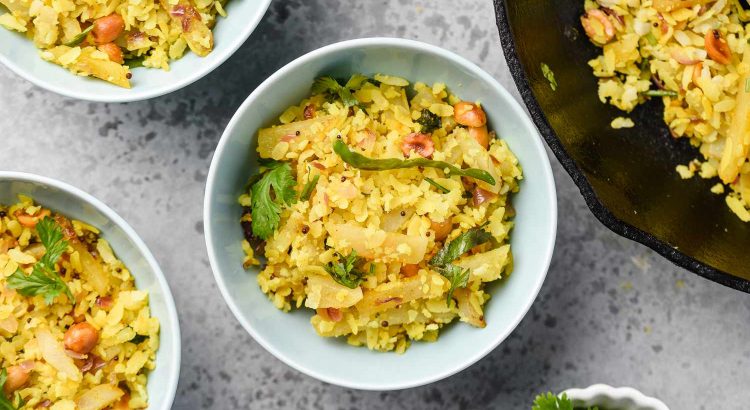Poha as an Indian breakfast has been a beloved dish that continues to be revealed for ages. It is a pancake made from rice which is not only interesting in flavor as well as nutritional. Getting into the inner workings of poha starch and protein are a way of making it evident as a health food. We, in this article, will dive into the composition of poha and see together how well it covers our nutritional needs and provides nourishment.
What is Poha?
Poha, sometimes referred to as flattened rice, is cooked by soaking the rice in water and then pressing it flat by rolling on the mortar. At the same time, it is widely prevalent in Indian houses and is taken as a ritual especially in the west part of the country. Poha can be cooked in a lot of ways and that is why it is equally loved for breakfast, snacks, desserts and if not for anything – paired with any cuisine as an accompaniment.
The Science Behind Poha
The essence of parboiling followed by flattening the rice and its consequent transformation into poha is rooted in science. Concurrently, parboiling is a process which facilitates rough boiling of rice in its husk. This leads to retention of some parts of the nutrients that otherwise be removed during the refining process. Through the consumption of low glycemic load foods like poha, it keeps us away from the dangers of excessive glucose.
Crushing the parboiled rice makes it possible to expose the maximum surface area, thus making it easier to absorb flavors and spices during the cooking procedure. Therefore, the spice content of the meal would be more intense. It is the science behind poha that accounts for it uniquely retaining the natural and good properties of rice and augmenting their taste and texture.
Nutritional Composition of Poha
Here is a breakdown of the nutritional composition of poha per 100 grams:
- Calories: 110
- Carbohydrates: 24 grams
- Protein: 2 grams
- Fat: 0.3 grams
- Fiber: 1 gram
- Iron: 1.5 milligrams
- Vitamin B1: 0.25 milligrams
- Vitamin B3: 1.5 milligrams
Poha is also a good source of antioxidants and essential minerals like magnesium and phosphorus.
Understanding Poha’s Nutritional Benefits
- Weight Management: Poha is a calorie- and fat, which makes it a right selection of candidates who want to lose some weight.
- Digestive Health: The fiber content in poha is important for healthy digestion by avoiding the occurrence of constipation and the regularity of bowel movement.
- Energy Boost: Poha is high in carbs, the main source of fuel transport to the body. Teach with poha at morning time and you will get a sustained release of energy throughout the day.
- Heart Health: Poha is a cholesterol-free and saturated-fat-free food, and thus, you can consider it for your heart health. The onset of antioxidants and vital minerals, to make a difference, has also demonstrated boundedness to cardiovascular health.
- Blood Sugar Regulation: The low GI of poha prevents fluctuations in the level of sugar in blood that is why it is a wise choice for diabetic patients or those who are about to develop this condition.
- Nutrient Density: Poha probably has the best vitamins and minerals that our body needs, such as iron, thiamine, and vitamin B3.
Conclusion
Poha is not just a delightful reference to breakfast but also this one is the healthy choice in terms of a food. Poha being rich in fiber, proteins, vitamins helps us pick up the right nutrition. Thus, we will incorporate this information while we prepare diet planning. Poha gives us the taste of joy. With it when we consume it, we get the low calorie and fat content also high fiber, micronutrients and low calories. It’s a healthy meal option for everyone of all ages.





